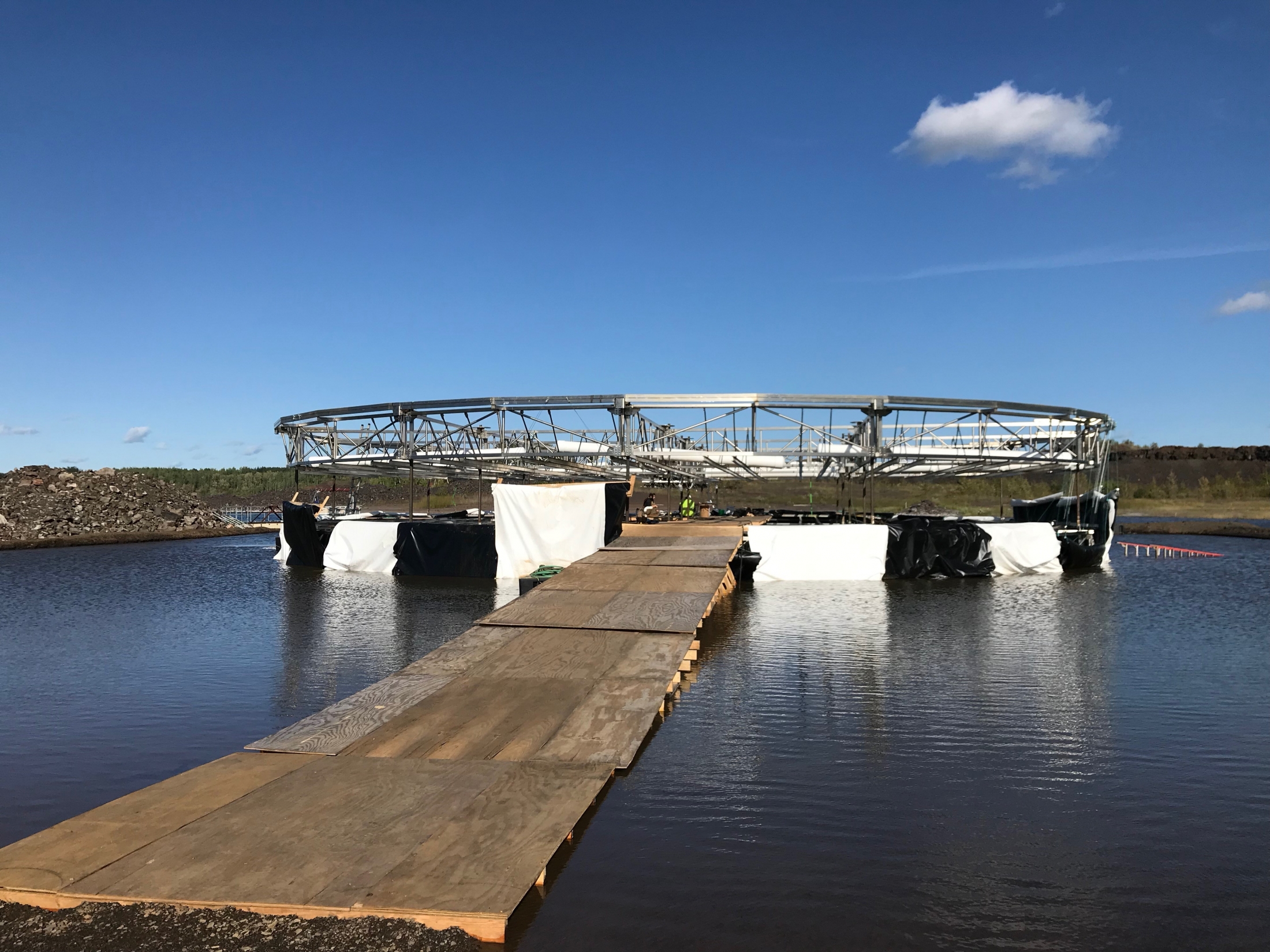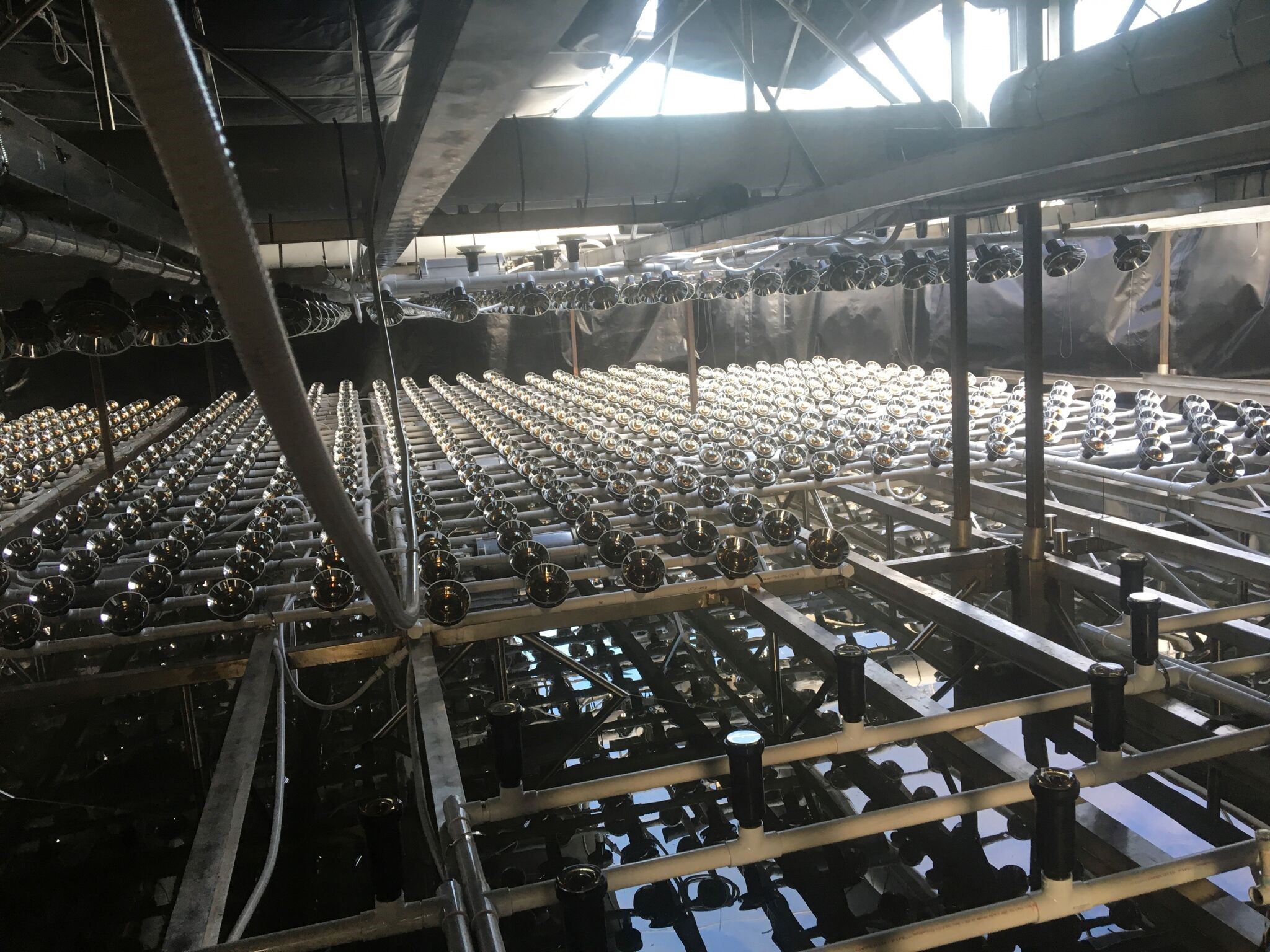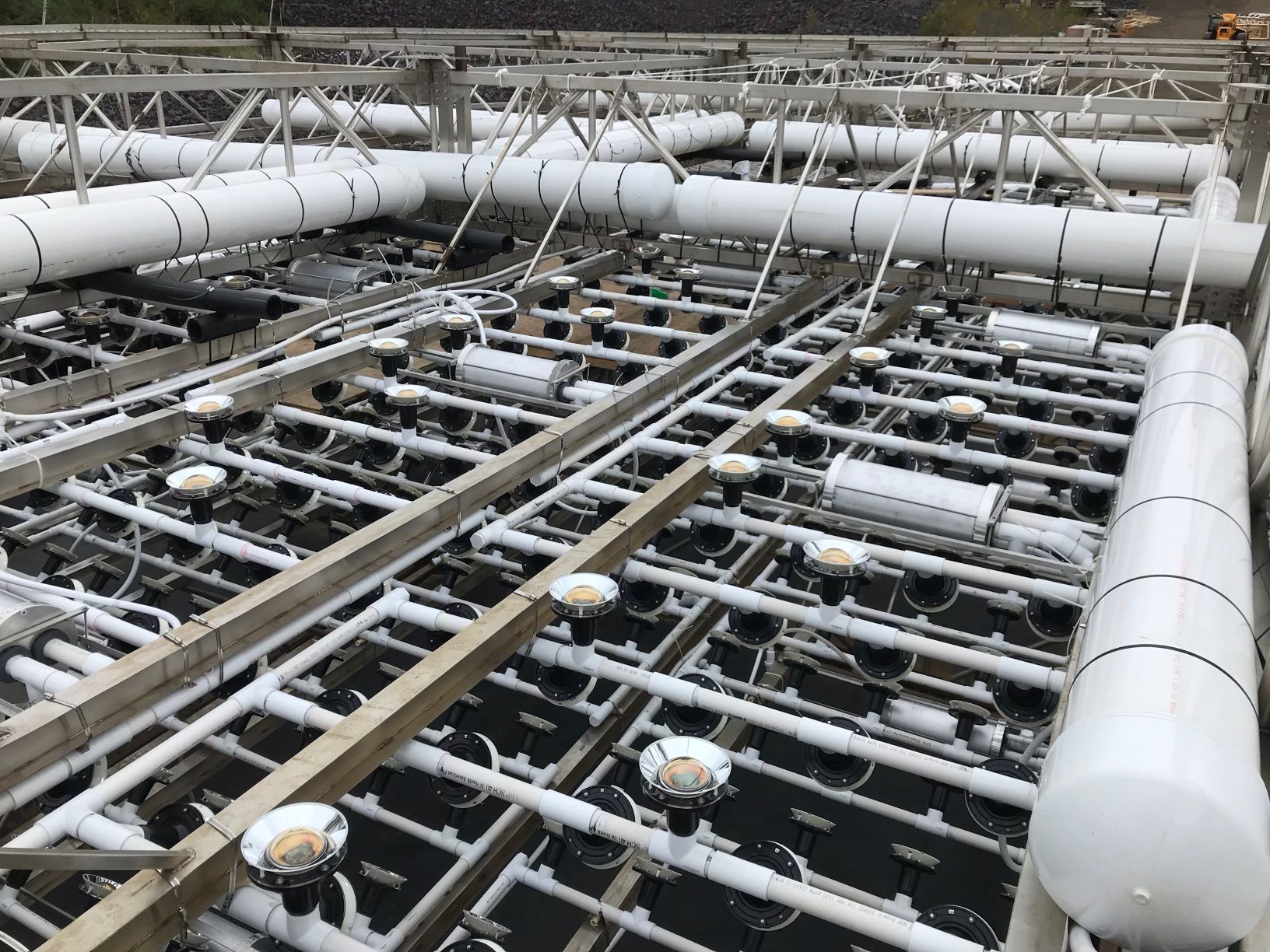Project update: CHIPS detector successfully deployed in Minnesota lake
As you go about your daily life, you will encounter many objects made of matter. If it takes up space and has mass, it’s matter. But when matter came into existence with the Big Bang, there should have also been an equal amount of antimatter, according to physics as we understand it.
If this were the case, however, we shouldn’t exist: When a particle and its antiparticle collide, they both annihilate and leave nothing but energy. So, if there were equal parts matter and antimatter when the universe began, why didn’t everything annihilate? Somehow, there must be more matter than antimatter.
This matter-antimatter asymmetry is one of the biggest mysteries in physics today. One potential explanation involves elusive particles called neutrinos and a phenomenon called charge-parity (CP) violation.
Enter CHIPS, the CHerenkov Detectors in Mine Pits experiment. This R&D project is focused on designing and developing a cost-effective detector to study neutrinos and how they interact. Scientists need lots of neutrino interactions to look for CP violation, but this requires larger neutrino detectors that, so far, are expensive to develop and build.

That’s where CHIPS comes in. The CHIPS Collaboration is on a mission to make neutrino detectors at a fraction of the usual cost. They took a big step in that mission last month when they successfully deployed their detector in a flooded opencast mine near Hoyt Lakes in northern Minnesota.
The CHIPS detector is a specific type of neutrino detector called a water Cherenkov detector. It works by submerging photomultiplier tubes in water; these photomultiplier tubes detect Cherenkov radiation, which is light generated when a neutrino interacts with a molecule of water and produces a secondary particle—like a muon or electron—that travels faster than the light does in water. (Cherenkov radiation is to light what a sonic boom is to sound.)
Traditional water Cherenkov detectors have been built in special large underground caverns. While these have their merits, the construction process is costly, and the excavation phase significantly delays the detector installation. Submerging the detector in a deep-water reservoir, as CHIPS is doing, avoids the latter problem entirely.
Another money-saving perk is that CHIPS is able to optimize the detector components to just focus on the neutrino beam from Fermi National Accelerator Laboratory near Chicago, Illinois. Called the Neutrinos at the Main Injector (NuMI) Beamline, it produces an intense beam of neutrinos for use by the NuMI Off-axis νe Appearance (NOvA) experiment, which also has a detector in northern Minnesota.

The CHIPS detector, a squat cylinder 12 meters high and 25 meters in diameter, consists of a steel frame covered in a plastic lining that contains five kilotons of purified water. The inner walls of the cylinder are covered with 1,770 photomultiplier tubes on 62 planes constructed of Schedule 40 PVC pipes; these act as a support for the photomultipliers and also provide a convenient ducting system for the electronics.
On Friday, November 22, the CHIPS team finished deploying its detector in an artificially made lake in a mine pit in northern Minnesota. It is now floating at an intermediate depth of 16 meters below the water’s surface (its top is floating approximately five or six meters below the surface). Eventually, the detector will rest on the bottom of the 60-meter-deep lake. While it’s in its present position, though, the CHIPS Collaboration can measure naturally occurring cosmic rays from outer space, which will help them to better understand the detector.

“The deployment was extremely hard work and very stressful, as it was the first time we had ever attempted anything this difficult,” says Jennifer Thomas, physics professor at University College London and principal investigator of CHIPS. “We will spend the winter calibrating and understanding the detector readout.”
Since its deployment, things have looked promising—the detector is already “talking” to them and they have observed Cherenkov patterns from cosmic rays. Thomas says they can see the “spill signals” from the FNAL accelerator complex, signals that let them know when the neutrino beam should be coming.
But there is also still plenty to do before CHIPS can start contributing neutrino measurements. “Next year we will bring the detector to the surface and install the wall planes—the most difficult part of this already very challenging project,” Thomas says.
All of the challenges will be worth it if the detector works as intended, which the collaboration will find out next year. For now, the CHIPS detector is settled in for a cold Minnesota winter.
About CHIPS
The CHIPS collaboration is made up of full-time students, postdocs, PI from University College London, co-PI from Nikhef in the Netherlands, and Lead Technical Support from the University of Minnesota. There were a number of visitors to the site over the summer from UCL, the Czech Republic, Aix-Marseille Université, the College of William & Mary, the University of Wisconsin–Madison, the University of Minnesota Duluth, and Michigan State University. In total, there are seven full-time people, seven part-time people, and about seven undergraduates.
CHIPS received a majority of its funding from the European Research Council, University College London, Nikhef, and the University of Wisconsin–Madison. The Wisconsin IceCube Particle Astrophysics Center, a research center of the University of Wisconsin–Madison, provided additional technical design and engineering effort. Other contributions to construction efforts came from the Leverhulme Trust in the UK, the University of Alberta, the University of Cincinnati, the University of Minnesota Duluth, and the College of William & Mary.
